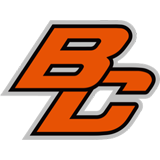Multi-Tiered Systems of Support
A Multi-Tiered System of Supports (MTSS) is a comprehensive framework comprised of a collection of research-based strategies designed to meet the individual needs and assets of the whole child. The MTSS framework provides schools with an efficient way to organize resources to support educators in the implementation of effective practices with fidelity so that all learners succeed.
BCPS Assessments
Intervention
What is Response to Intervention?
All parents want to see their child succeed. It can be very frustrating if a child falls behind in reading, math, writing, or other subjects.
Response to Intervention (RTI) is a process that provides intervention and educational support to all students at increasing levels of intensity based on their individual needs. The goal is to prevent problems and intervene early so that students can be successful.
RTI is a process designed to help schools focus on interventions that are matched to student needs. The information gained from the RTI process is used by school personnel and parents to adapt instruction and to make decisions regarding educational support.
What Does RTI Look Like?
The RTI process has three tiers that build upon one another. Each tier provides a more intense level of support:
-
- The school provides all students with access to high-quality curriculum, instruction, and behavioral supports in the general education classroom.
- Tier II includes additional targeted, supplemental instruction/interventions.
- The school provides interventions to individuals or small groups of students who need more support than they are receiving through Tier 1.
- Tier III includes intensive interventions.
- The school develops and implements intensive interventions to meet the individual needs of students.
Leader in Me
Byron Center Public Schools is a proud "Leader in Me" school. Across the district, at every grade level, BCPS focuses on developing the 7 Habits of Highly Effective People.
- Be proactive
- Begin with the end in mind
- Put first things first
- Think win-win
- Seek first to understand, then to be understood
- Synergize
- Sharpen the saw
Students get the opportunity to demonstrate their leadership skills with classroom jobs, being kind to others and through academic success.
Third Grade Reading Law
In 2016, the Michigan Legislature passed the Third Grade Reading Law to ensure that students exit third grade reading at or above grade level. The law requires districts to assess K-3 students' reading level and provide extra support for students who are not reading at grade level.
If a student is reading below grade level, parents will be provided information about intervention options. The student will receive reading intervention until they no longer have a reading deficiency.
Title I
Title I funding is used to offer support services to students who need extra time and instruction to master grade-level curriculum. Title I schools are identified by a state formula each year.
The following is a brief description of the manner in which schools are identified, the target population selected and the program implemented.
Identification of Target Schools
Title I schools are determined by federal government guidelines.
Selection of Target Population
Children are selected for Title I support on the basis of a needs assessment, recommendations of the teacher, and objective data.
Program Design
Title I employees are employed within the qualifying schools that are involved in the Title I Program. These employees provide supplemental instruction to meet the needs of students. Title I services may be short term or long term depending on the needs of each individual student.
Evaluation Design
Each Title I student is monitored each marking period on their academic progress.






